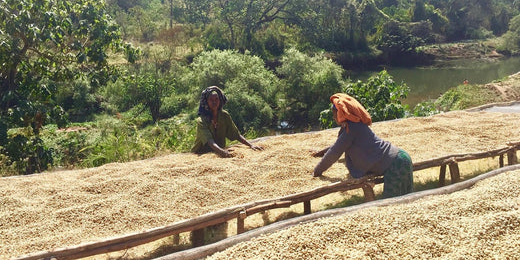Your Cart is Empty
Christmas Shipping Information // New seminar dates every first friday of the month! // Free international shipping available
Christmas Shipping Information // New seminar dates every first friday of the month! // Free international shipping available
Kurse & Seminare
About Us

Arabica vs. Robusta: Differences in the growing conditions of coffee plants
June 19, 2019 2 min read
A guest article by our student intern Florian about the growing conditions of coffee plants:
"What actually makes a coffee growing area?" I have been asking myself this question for quite a long time. So I've done some research and found out a few things.
Coffee is mostly grown in regions that lie 20° to 25° north and south of the equator. In the so-called "coffee belt" around the equator, there is a humid-dry alternating climate that ensures sufficient precipitation and at the same time does not have too extreme temperatures.
Coffee farms are found at altitudes of 600m to 2,300m (Arabica) and 100m to about 1,000m (Robusta). So the two main species of the coffee plant Coffea, the Coffea Arabica and Coffea Canephora (Robusta) are both found at altitudes of 600m to 1000m.
Arabica feels best at an average of 21°C, while Robusta likes warmer temperatures more, around 26°C. But neither likes it too warm (>30°C ) or too cold (<13°C). Coffee plants like high humidity, in the case of the Robusta plants even almost 100%.
The plants also have high demands on the soil. It must be rich in minerals and preferably a loamy soil, but not too firm. Water should still be able to penetrate the soil. During long periods of drought, the water must be stored in the soil. The soil should also be as deep as possible, have a neutral to slightly acidic pH value and be rich in nitrogen. It should also not be low in potassium and phosphoric acid. The humus content should also not be forgotten. Coffee plants are often planted on volcanic soils, as these are very rich in minerals. As with every plant, coffee plants need water. For each coffee plant, this means 1,000 to 2,000 mm per square metre per year.
Join our Coffee Crew
10% discount on your first coffee order.And more: Sign up for our newsletter and never miss coffee releases, offers and background stories again.

🌲 Holiday Collection
Discover our seasonal gifts: winter roasts, festive classics, and curated sets made for coffee lovers and holiday moments.




















